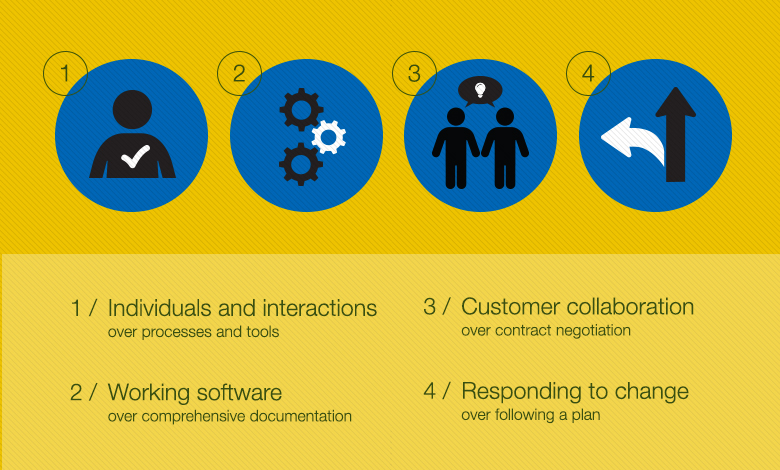Most of us have come across the term Agile!! It is a most used term when we talk about SDLC (Software Development Life Cycle).
Don’t worry you will not be reading another article for what is agile and how it works! I am going to focus how Agile has arrived.
The most popular Agile methods include Rational Unified Process (1994), Scrum (1995), Crystal Clear, Extreme Programming (1996), Adaptive Software Development, Feature Driven Development, and Dynamic Systems Development Method (DSDM) (1995). These are now collectively referred to as agile methodologies after the Agile Manifesto was published in 2001.
Principles behind the Agile Manifesto:
In 2001 a group of developers got together in Snowbird, Utah (United States) to talk about what they believed. The result was the Agile Manifesto.

Agile Manifesto [Source: https://signalinc.com/agile-dont-know/]
12 Key Principles of it are mapped to its core values,
Individuals and interactions
- The most efficient and effective method of conveying information to and within a development team is a face-to-face conversation.
- At regular intervals, the team reflects on how to become more effective, then tunes and adjusts its behavior accordingly.
- Build projects around motivated individuals. Give them the environment and support they need, and trust them to get the job done.
Working software
- Working software is the primary measure of progress.
- The best architectures, requirements, and designs emerge from self-organizing teams.
- Deliver working software frequently, from a couple of weeks to a couple of months, with a preference to the shorter timescale.
- Continuous attention to technical excellence and good design enhances agility.
Customer collaboration
- Business people and developers must work together daily throughout the project.
- Highest priority is to satisfy the customer through the early and continuous delivery of valuable software.
- Simplicity–the art of maximizing the amount of work not done–is essential.
- Agile processes promote sustainable development. The sponsors, developers, and users should be able to maintain a constant pace indefinitely.
Responding to change
- Welcome changing requirements, even late in development. Agile processes harness change for the customer’s competitive advantage.
Related Links:
Related Keywords
DevOps, Waterfall, Iterative, Development Practice

One Reply to “Agile Manifesto”